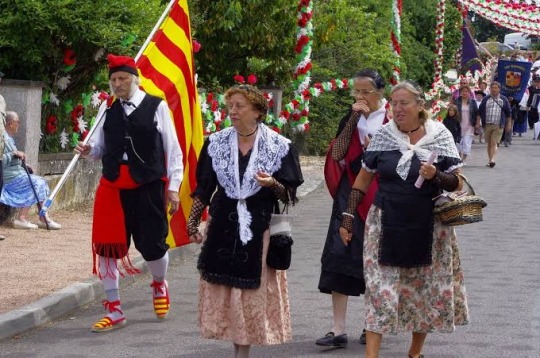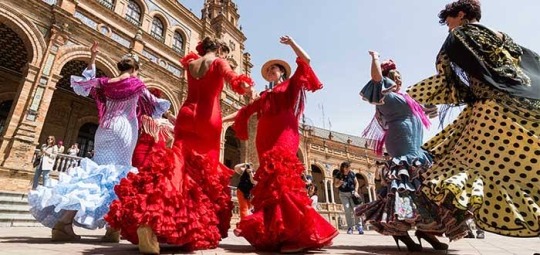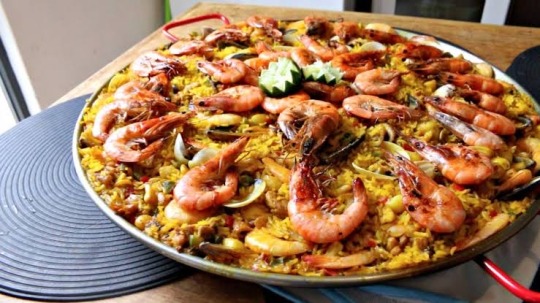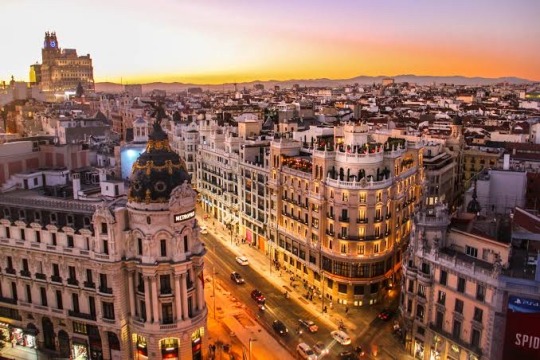Text
That’s all the info we’ll provide for today but Spain for sure it’s a place you should visit and get to know better
youtube
0 notes
Text
Traditional Spain clothing:
★ Traje de flamenca: The traje de flamenca or ‘flamenca outfit’ is the dress that traditionally women wear at Ferias (festivals) in Andalusia. It has undergone significant changes over centuries up to the present day.
★ Fallero and fallera: The traditional clothing of the Valencian Community varies according to the area and the city. In Valencia, which is the capital of this Spanish autonomous region, we find ‘traje de fallera’ for women and ‘traje de saragüell’ or ‘traje de torrentí’ for men.
★ Chulapo and Chulapa: The traditional clothing in Madrid is the ‘traje de chulapo’ for men and ‘traje de chulapa’ for women, which is most commonly worn during the San Isidro celebration in May.
★ Baserritarra: The traditional costumes in the Basque Country are very diverse, because each region has its own typical outfit. However, ‘baserritarra’ is one of the most popular Basque outfits.
★ Hereu and pubilla:The traditional dress of Cataluña is called ‘tratge d’hereu’ for men and ‘tratge de pubilla’ for women. It includes the ‘barretina’, a sort of woollen, long cap usually purple or red, and the ‘faixa’, a kind of wide belt for the men, and ‘ret’, a thin net veil over the head for the women.

0 notes
Text
Spain's most famous traditions:
★ The nap: is a short nap taken in the early afternoon, often after the midday meal. Such a period of sleep is a common tradition in some countries, particularly those where the weather is warm.For dinner they usually have a smaller meal.
★ Flamenco:Is an art form based on the various folkloric music traditions of southern Spain, originating in the region of Andalusia, but also having a historical presence in Extremadura and Murcia. In a wider sense, the term is used to refer to a variety of Spanish musical styles.
★ Bullfights: It is a ceremony that is carried out in carefully prearranged steps, as called for by the tradition of the corrida, each stage with its own name, and which the aficionados in the crowd will know by heart.
★ The carnival: The carnival season takes place in late February or early March, usually during the week leading up to Lent. Regions across Spain organize carnivals and fiestas, most involving music and dancing.

0 notes
Text
Some of Spain typical food are:
★ Paella: It is a rice dish that can have meat, fish, seafood, and vegetables and is characterized by its use of saffron to give it a yellow color and unique flavor.
★ Potato omelette: Crispy fried potatoes and onions, chopped tomatoes and green onions lend even more flavor and color.
★ Bull’s tail: “Rabo de toro”, dating back to the 16th century when it was prepared with bulls killed during bullfighting. As for the criadillas, they can actually be made out of any animal's testicles, not only bulls'
★ Galician octopus: It originated in the northwestern Spanish region of Galicia where octopus is a specialty and a common catch for local fishermen. Serve as part of a tapas spread with other dishes like patatas bravas, croquettes, or even a cheese plate. The dish pairs nicely with a dry white wine or vinho verde.

0 notes
Text
Hi, today Mich and I are going to be talking about one of our favorite countries in Europe, Spain. We really like Spain because of its traditions and culture.
Spain is a country located in southwestern Europe on the Iberian Peninsula to the south of France and Andorra and to the east of Portugal. ... Spain's capital and largest city is Madrid, and the country is known for its long history, unique culture, strong economy, and very high living standards.

1 note
·
View note